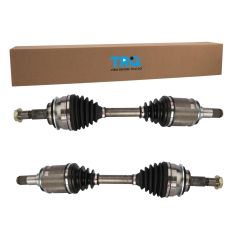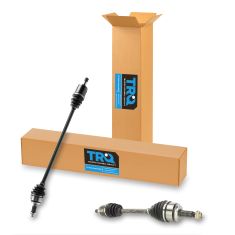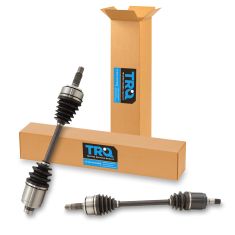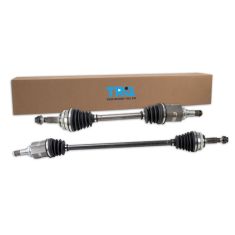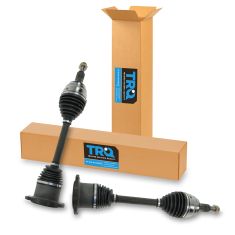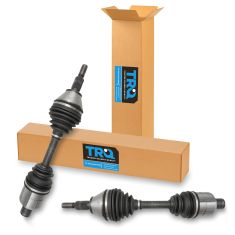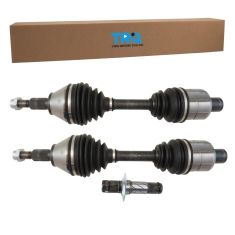Axles and CV-Shafts
-
-
- Air Deflectors & Valance Panels
- Battery Trays & Related
- Body Panels
- Bumpers & Related - Front & Rear
- Convertible Tops, Soft Tops, & Parts
- Decal & Stripe Kits
- Emblems & Nameplates
- Engine Compartment Trim
- Frame Parts & Bushings
- Fuel Door Parts
- Fuel Tank Filler Neck
- Grille
- Header Panel
- Hood & Hatch Lift Supports
- Hood Latch & Catch Brackets
- Hood Release Cable
- Jack Pads
- Radiator Supports
- Rust Repair Panels
- Splash Shields & Fender Liners
- Tailgate Cables
- Tailgate Hinges & Related
- Weatherstripping
-
- Car Covers
- Exterior Lighting
- Exterior Parts & Accessories
- Exterior Safety & Security
- Exterior Storage
- Fender Flares
- License Plate Brackets & Frames
- Mud Flaps & Splash Guards
- Nerf Bars, Side Steps, Running Boards
- Radio Antenna
- Rain Deflectors
- Roll Bars, Light Bars, & Related
- Roof Rack
- Skid Plates
- Spare Tire Carriers & Related
- Spare Tire Covers
- Tire Care
- Tonneau Covers
- Tow Hooks & D-Shackles
- Towing Accessories
- Trailer Hitch & Components
-
- Accelerator Pedal Pad
- Auto Carpet
- Brake Pedal Pad
- Clutch Pedal Pad
- Console Parts
- Dash Pad Cover
- Dash Vents
- Floor Mats & Liners
- Horns & Horn Parts
- Interior Parts & Accessories
- Mirror - Interior Rear View
- Seat Cover and Sets
- Seat Heater Kits
- Seat Parts and Accessories
- Sun Visors & Related
- Trunk & Cargo Parts
-
- Accelerator Pedals & Sensors
- Alarms, Control Modules, & Remote Start
- Cruise Control Switch & Lever
- Electrical Parts
- Hazard Switch
- Ignition Key Lock Cylinder
- Ignition Switch
- Keyless Entry Remote & Related
- Neutral Safety Switch
- Parking Assist Cameras & Monitors
- Power Mirror Switch
- Power Seat Switches
- Power Window Switch
- Radio, Navigation, Entertainment
- Reverse Light Switch
- Trunk Release & Lock Solenoids
- Turn Signal Switches and Levers
- Windshield Wiper Switch
-
- Idler Arm
- Pitman Arm
- Power Steering Hoses
- Power Steering Oil Cooler
- Power Steering Pressure Sensor
- Power Steering Pump
- Power Steering Pump Cooling Fan
- Power Steering Pump Pulley
- Power Steering Pump Reservoir
- Steering Dampers
- Steering Knuckles and Spindles
- Steering Rack and Gear Boxes
- Steering Shafts & Couplers
- Steering Wheels & Column Parts
- Tie Rods & Adjusting Sleeves
-
-
-
-
1727
173
10
10
-
Notify When Available
Replaces Toyota Lexus Front Driver & Passenger Side 2 Piece CV Axle Assembly Set TRQ CSA82458
Brand: TRQ - CSA82458$189.95Save 13%List $218.95 Save $29.00Brand: TRQ - CSA82458$189.95Save 13%List $218.95 Save $29.00 -
Notify When Available
Replaces Honda Civic Front Driver & Passenger Side 2 Piece CV Axle Assembly Set TRQ CSA82446
Brand: TRQ - CSA82446$139.95Save 14%List $162.95 Save $23.00Brand: TRQ - CSA82446$139.95Save 14%List $162.95 Save $23.00 -
Notify When Available
Replaces Toyota Camry Front Driver & Passenger Side 2 Piece CV Axle Assembly Set TRQ CSA72926
Brand: TRQ - CSA72926$154.95Save 28%List $214.95 Save $60.00Brand: TRQ - CSA72926$154.95Save 28%List $214.95 Save $60.00 -
Notify When Available
Replaces Honda Accord Civic Acura TSX Front Driver & Passenger Side 2 Piece CV Axle Assembly Set TRQ CSA72814
Brand: TRQ - CSA72814$149.95Save 16%List $177.95 Save $28.00Replaces Honda Accord Civic Acura TSX Front Driver & Passenger Side 2 Piece CV Axle Assembly Set TRQ CSA72814
Brand: TRQ - CSA72814$149.95Save 16%List $177.95 Save $28.00 -
Notify When Available
Replaces Toyota Corolla Matrix Pontiac Vibe Front Driver & Passenger Side 2 Piece CV Axle Assembly Set TRQ CSA64165
Brand: TRQ - CSA64165$144.95Save 10%List $161.95 Save $17.00Brand: TRQ - CSA64165$144.95Save 10%List $161.95 Save $17.00 -
Notify When Available
Replaces Chevrolet GMC Cadillac Front Driver & Passenger Side 2 Piece CV Axle Assembly Set TRQ CSA82439
Brand: TRQ - CSA82439$199.95Save 13%List $229.95 Save $30.00Replaces Chevrolet GMC Cadillac Front Driver & Passenger Side 2 Piece CV Axle Assembly Set TRQ CSA82439
Brand: TRQ - CSA82439$199.95Save 13%List $229.95 Save $30.00 -
Notify When Available
Replaces Chevrolet GMC Hummer Front Driver & Passenger Side 2 Piece CV Axle Assembly Set TRQ CSA82438
Brand: TRQ - CSA82438$214.95Save 14%List $250.95 Save $36.00Replaces Chevrolet GMC Hummer Front Driver & Passenger Side 2 Piece CV Axle Assembly Set TRQ CSA82438
Brand: TRQ - CSA82438$214.95Save 14%List $250.95 Save $36.00 -
Notify When Available
Replaces Ram 1500 1500 Classic Front Driver & Passenger Side 2 Piece CV Axle Assembly Set TRQ CSA72779
Brand: TRQ - CSA72779$199.95Save 12%List $226.95 Save $27.00Replaces Ram 1500 1500 Classic Front Driver & Passenger Side 2 Piece CV Axle Assembly Set TRQ CSA72779
Brand: TRQ - CSA72779$199.95Save 12%List $226.95 Save $27.00 -
Notify When Available
Replaces Toyota 4Runner Tacoma Front Driver & Passenger Side 2 Piece CV Axle Assembly Set TRQ CSA82466
Brand: TRQ - CSA82466$174.95Save 13%List $201.95 Save $27.00Replaces Toyota 4Runner Tacoma Front Driver & Passenger Side 2 Piece CV Axle Assembly Set TRQ CSA82466
Brand: TRQ - CSA82466$174.95Save 13%List $201.95 Save $27.00 -
Notify When Available
Replaces Ram 1500 1500 Classic Front Driver & Passenger Side 3 Piece CV Axle Assembly Set TRQ CSA64142
Brand: TRQ - CSA64142$209.95Save 10%List $233.95 Save $24.00Replaces Ram 1500 1500 Classic Front Driver & Passenger Side 3 Piece CV Axle Assembly Set TRQ CSA64142
Brand: TRQ - CSA64142$209.95Save 10%List $233.95 Save $24.00
loading...
Choose the Make of Your Vehicle
